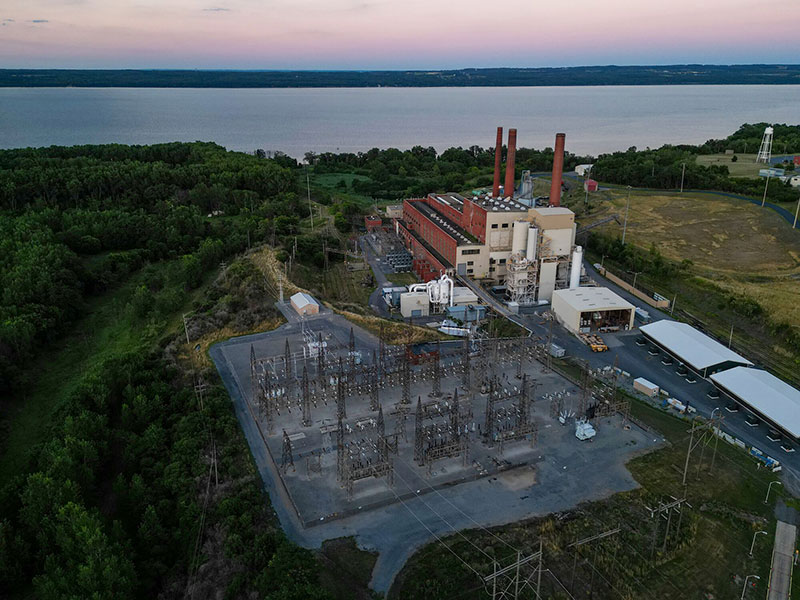We take on many of the biggest environmental and health challenges of our time and stick with them. The law makes change.
Because the earth needs a good lawyer.
September 2022
Presented by Earthjustice’s Clean Energy Program in partnership with Sierra Club’s Environmental Law Program.
A new guidebook — “The Energy Bomb: How Proof-of-Work Cryptocurrency Mining Worsens the Climate Crisis and Harms Communities Now” — from Earthjustice and Sierra Club, is the first to comprehensively document the explosive growth of cryptocurrency mining in the United States and examine how this industry is impacting utilities, energy systems, emissions, communities and ratepayers.
Cryptocurrency mining is an extremely energy-intensive process that threatens the ability of governments across the globe to reduce our dependence on climate-warming fossil fuels.
If we do not take action to limit this growing industry now, we will not meet the goals set forth by the Paris Agreement and the Intergovernmental Panel on Climate Change to limit warning to 2°C.
This guidebook discusses several such examples where fossil-fueled cryptocurrency mining has increased local air, water, and noise pollution, increased costs on others, and increased climate pollution at a time when we should be doing everything in our power to move in the opposition direction to mitigate the worst impacts of the climate crisis.
After cryptocurrency mining was banned in China in 2020, the amount of mining operations exploded in the United States.
In the year prior to July 2022, Bitcoin consumed an estimated 36 billion kilowatt-hours (kWh) of electricity, as much as all of the electricity consumed in Maine, New Hampshire, Vermont, and Rhode Island put together in that same time period.
The past two years have demonstrated that the industry preferentially seeks readily-available energy and minimal regulation, re-starting defunct coal and gas plants, flooding the restructured electricity market in Texas, and tapping into power grids where regulators have little oversight.
This explosive growth strains energy grids, raises retail electricity rates, and increases total carbon emissions and local air pollution.
The design of proof-of-work cryptocurrency mining incentivizes miners to ramp up operations as quickly as possible, often irrespective of the source of energy.
Indeed, big mining operations have shown a willingness to invest in otherwise uneconomic power sources, like defunct coal plants or low-capacity gas plants, as long as that electricity can be made available quickly. Unlike other large electricity users, cryptocurrency mining operations have a short time horizon, and most have shown little interest in investing in new clean energy.
Proof-of-work cryptocurrency mining is designed to consume enormous quantities of energy. The process effectively entails millions of computing machines racing to solve a complex, but meaningless, problem.
Over time, the electricity used by miners in these races increases exponentially.
Top-down estimates of the electricity consumption of cryptocurrency mining in the United States imply that the industry was responsible for an excess 27.4 million tons of carbon dioxide (CO2) between mid-2021 and 2022 — or three times as much as emitted by the largest coal plant in the U.S. in 2021.
But these estimates are simply based on the likely energy consumption to solve cryptocurrency’s puzzles.
A ground-up approach, looking at how the industry has actually been deployed, suggests that proof-of-work cryptocurrency might be yet more impactful.
Cryptocurrency miners procure their electricity in four different ways:
The proof-of-work cryptocurrency mining community is well aware that its extraordinary energy consumption — and fossil fuel habit — is unattractive when much of the rest of the economy strives to rapidly decarbonize.
In the last year, the industry and its trade organizations have rolled out a series of sustainability claims that are anywhere from outright fiction and greenwashing to no more than hopeful theories, undermined by actual practices.
Today, the cryptocurrency mining industry already uses half the electricity of the entire global banking sector (while holding a miniscule fraction of the value), and continues to increase.
In the United States, the industry has shown little indication of slowing its growth when prices are high.
Miners have demonstrated, consistently, from their initial rush to China where coal is a predominant source of electricity to the recent deal between AboutBit and a soon-to-be-retired coal plant in Indiana, that proof-of-work cryptocurrency mining prioritizes the short-term need for large amounts of electricity over longer-term investments in renewable energy.
And unlike other industries where self-imposed, or regulation-based, community standards could result in more sustainable practices, proof-of-work mining is an inherent arms race towards increased energy consumption, until prices no longer support growth.
State, local, and federal policymakers and regulators can help ensure cryptocurrency mining does not undermine climate or health goals, or adversely impact ratepayers.
The massive energy consumption of cryptocurrency mining threatens to undermine decades of progress towards achieving climate goals, and threatens grids, utilities, communities, and ratepayers.
Some jurisdictions have, or are considering, simply banning the practice of mining proof-of-work cryptocurrencies.
Shy of a complete moratorium, there are actions that can be taken by state, local, and federal officials to protect energy systems, communities, and ratepayers.
Download
Executive Summary
I. Cryptocurrency Mining’s Explosive Growth in the United States
II. Proof-of-Work Cryptocurrency: A Brief Introduction
III. No Longer a Hobbyist’s Experiment: How Cryptocurrency Mining Transformed Into Massive, Centralized Operations to Maximize Profits
IV. The Scale and Source of Bitcoin Energy Usage is Largely Invisible to Regulators
V. Where Do The Electrons Come From?
VI. The Climate and Energy Impacts of Cryptocurrency Mining in the United States are Substantial
VII. Cryptocurrency Mining Harms Communities and Electricity Ratepayers
VIII: Breaking Through the Bitcoin Myths
IX. Recommendations to Mitigate the Risks of Proof-of-Work Cryptocurrency Mining
Acknowledgements
Endnotes
Authors:
Stay informed on how we hold accountable those who break our environmental laws.
Author
Administraroot


